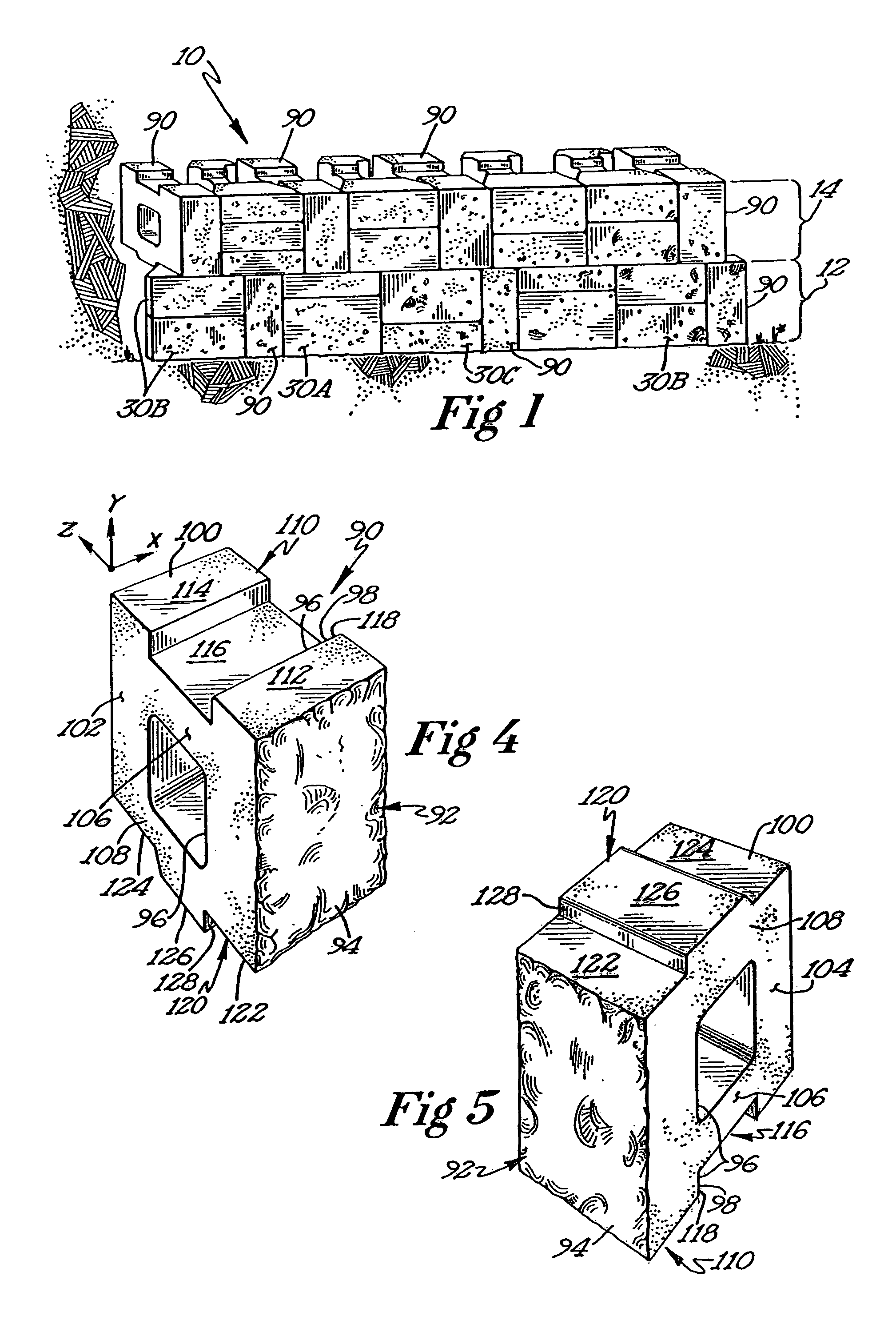Multiuse block and retaining wall
a multi-use block and retaining wall technology, applied in the field of retaining wall construction, can solve the problems of inability to achieve setbacks, labor-intensive retaining wall construction, and the requirement that the retaining wall be substantially vertically assembled
- Summary
- Abstract
- Description
- Claims
- Application Information
AI Technical Summary
Benefits of technology
Problems solved by technology
Method used
Image
Examples
Embodiment Construction
[0033]With reference to the drawings, FIG. 1 shows one embodiment of a retaining wall 10 comprising a plurality of horizontally and vertically oriented preformed blocks 30A, 30B, 30C, and 90 of the present invention. As will be discussed later in greater detail, the horizontal, preformed blocks 30A, 30B, and 30C may be formed in different incremental thickness, and are combinable so that their total thickness is equal to the height of the vertical, preformed blocks 90. As shown in FIG. 1, the horizontal, preformed blocks 30A, 30B, 30C may be selected and stacked in combinations of twos and threes. That is, block 30A and block 30C, two blocks of 30B, and three blocks of 30C. It will be understood, that each course of blocks may be defined by the height of the vertical blocks 90. Thus, beginning with the lower left segment of the wall 10, the first course 12 comprises two stacked 30A blocks, a vertical block 90, two stacked 30A and 30C blocks, two stacked 30C and 30A blocks, a vertica...
PUM
 Login to View More
Login to View More Abstract
Description
Claims
Application Information
 Login to View More
Login to View More - R&D
- Intellectual Property
- Life Sciences
- Materials
- Tech Scout
- Unparalleled Data Quality
- Higher Quality Content
- 60% Fewer Hallucinations
Browse by: Latest US Patents, China's latest patents, Technical Efficacy Thesaurus, Application Domain, Technology Topic, Popular Technical Reports.
© 2025 PatSnap. All rights reserved.Legal|Privacy policy|Modern Slavery Act Transparency Statement|Sitemap|About US| Contact US: help@patsnap.com



